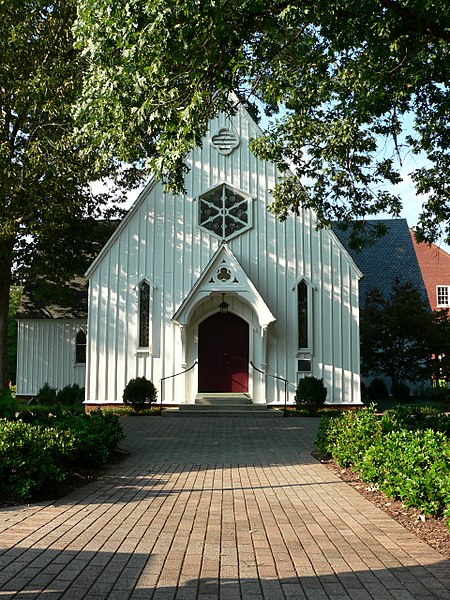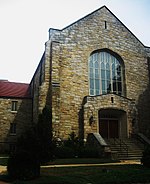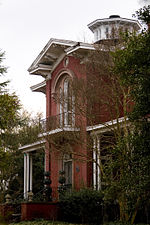St. Mary's Chapel (Raleigh, North Carolina)
19th-century Episcopal church buildingsCarpenter Gothic church buildings in North CarolinaChapels in the United StatesChurches completed in 1855Churches in Raleigh, North Carolina ... and 7 more
Churches on the National Register of Historic Places in North CarolinaEpiscopal church buildings in North CarolinaHistoric district contributing properties in North CarolinaNRHP infobox with nocatNational Register of Historic Places in Wake County, North CarolinaRichard Upjohn church buildingsUse mdy dates from August 2023

St. Mary's Chapel is a historic Episcopal chapel located at 900 Hillsborough Street in Raleigh, North Carolina, United States. The chapel is on the grounds of St. Mary's School, a college-preparatory boarding and day school founded in the 1840s. The 19th-century building was designed by architect Richard Upjohn in the Gothic Revival style and later expanded. It was added to the National Register of Historic Places (NRHP) in 1970.
Excerpt from the Wikipedia article St. Mary's Chapel (Raleigh, North Carolina) (License: CC BY-SA 3.0, Authors, Images).St. Mary's Chapel (Raleigh, North Carolina)
Hillsborough Street, Raleigh Glenwood South
Geographical coordinates (GPS) Address Nearby Places Show on map
Geographical coordinates (GPS)
| Latitude | Longitude |
|---|---|
| N 35.781666666667 ° | E -78.653055555556 ° |
Address
Saint Mary's School
Hillsborough Street
27603 Raleigh, Glenwood South
North Carolina, United States
Open on Google Maps










